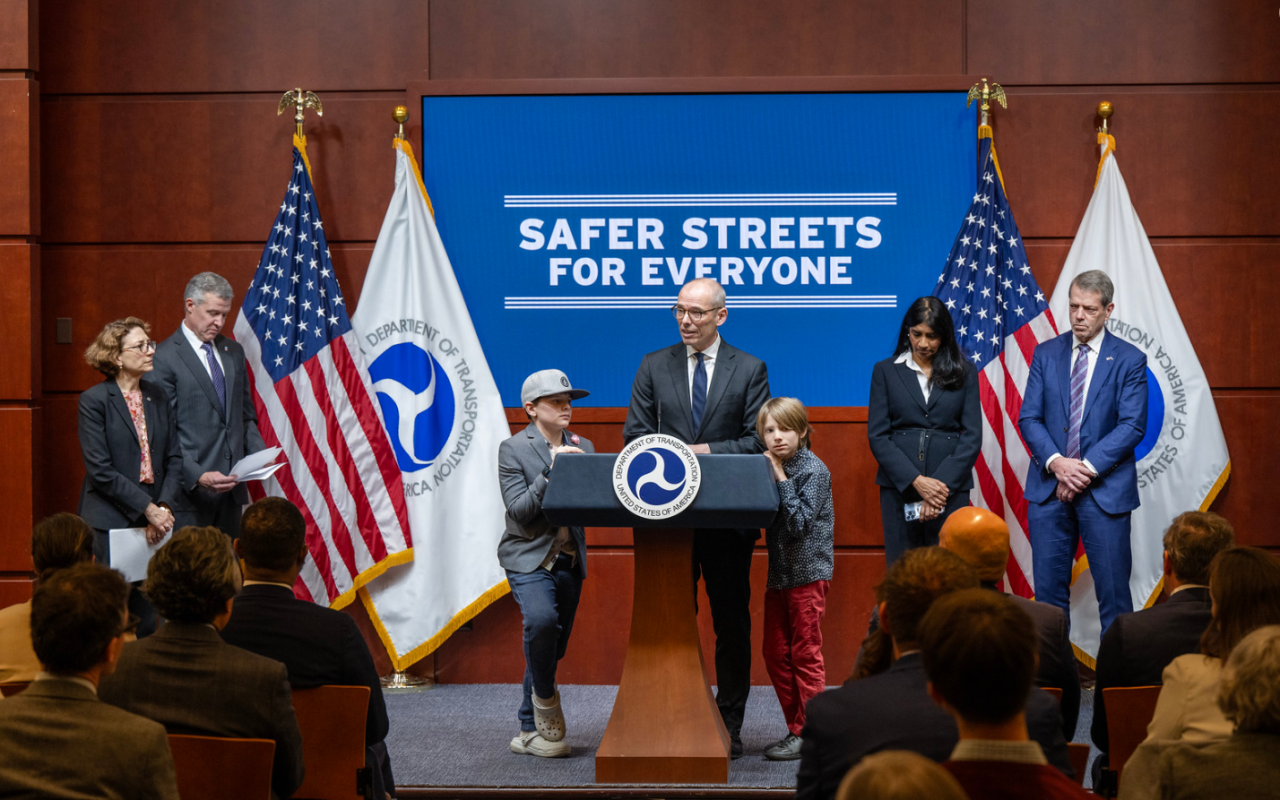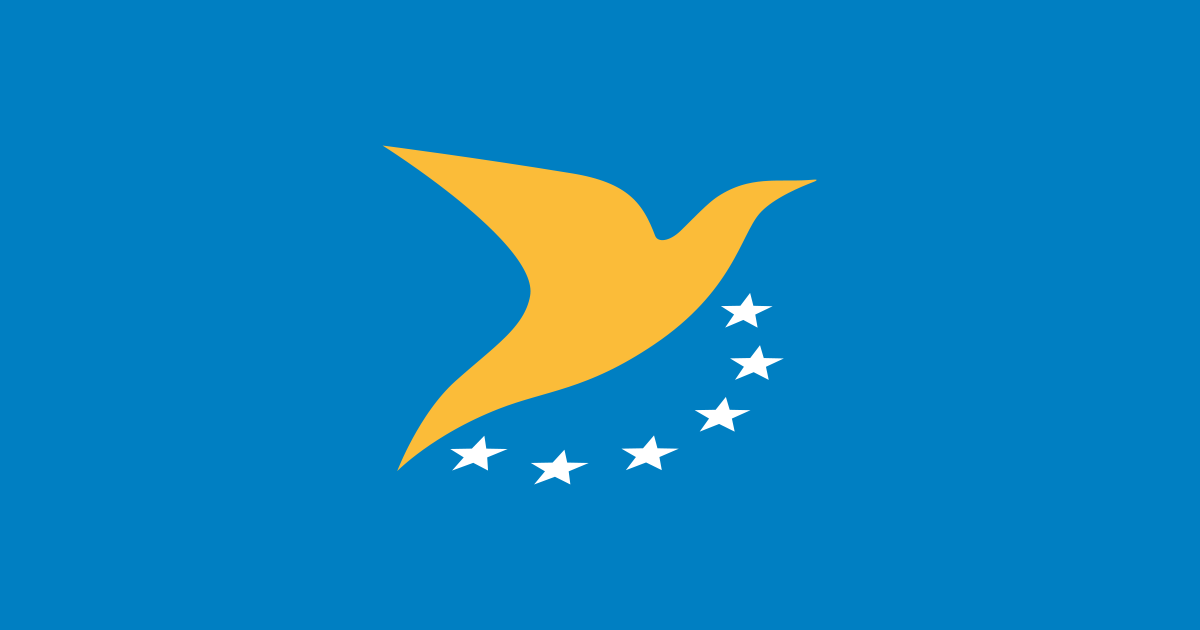After launching the comprehensive National Roadway Safety Strategy in early 2022, public organizations, private businesses, research institutions, and more have stepped up in response to USDOT’s call to action to reduce roadway deaths.
WASHINGTON–The U.S. Department of Transportation today announced its 2024 National Roadway Safety Strategy Progress Report (NRSS), a Departmental update two years after the release of the original NRSS on January 27, 2022. The Department also shared an additional 41 new commitments from businesses and organizations to support the NRSS and take action to reverse the crisis on America’s roads, bringing the total number of Allies in Action to 160.
The report provides an update on the Department’s efforts to address serious and fatal injuries on our roadways, details the Department’s accomplishments related to addressing the NRSS actions in 2023, and identifies four new commitments to actions under the NRSS in calendar year (CY) 2024 and beyond. The most significant actions in 2023 include:
- Awarded $1.7 billion in funding to improve roadway safety at the local, regional, and Tribal levels through the Safe Streets and Roads for All discretionary grant program. Over 1,000 communities received funding, representing close to 70 percent of all Americans.
- Accelerated the deployment of new motor vehicle safety technologies through rulemakings for automatic emergency braking on all new passenger vehicles, as well as heavy vehicles such as commercial trucks.
- Initiated an advance notice of proposed rulemaking for impaired-driving prevention technology standards to inform requirements that will deter behaviors such as alcohol-impaired driving.
- Updated key road safety regulations such as the new edition of the Manual on Uniform Traffic Control Devices, and revised guidance to encourage States using Federal-aid funds to use repaving and rehabilitation projects to improve safety for all road users.
- Expanded the use and support of the National Emergency Medical Services Information System by accepting data from all 50 States, 2 territories, and the District of Columbia.
“In the two years since we launched the National Roadway Safety Strategy, the Biden-Harris administration has taken action to make roads safer, emergency responders more efficient, and vehicle safety technology stronger, contributing to six straight quarters of decreasing traffic deaths—but America still loses tens of thousands of lives on our roads every year and we must do more,” said U.S. Transportation Secretary Pete Buttigieg. “The updates we’re announcing today show that progress is possible, and we continue our call to action for all Americans to join with us and the partners who have already stepped up to save lives on our roadways.”
“The Department won’t achieve zero deaths on our roadways alone, which is why involving stakeholders across the country, at every level of government, philanthropy, advocacy, and the private sector, is key,” said U.S. Transportation Deputy Secretary Polly Trottenberg. “The National Roadway Safety strategy is driving a cultural shift that treats roadway deaths as unacceptable and preventable. We have an incredible opportunity with President Biden’s Bipartisan Infrastructure Law, which allows us to make a generational investment in America’s transportation network.”
The 41 new commitments that were announced today bring the total number of Allies in Action to more than 160. Of those, 36 came from States and Territories–including Transportation Agencies and State Highway Safety Offices. State Agencies and Offices, along with all Allies in Action, have committed to taking specific, tangible steps to actively reduce the number of deaths and serious injuries on America’s roads and streets, expand the adoption of a Safe System Approach and a Zero Fatalities vision across the nation, and transform how we as a nation think about road safety. Allies in Action span multiple sectors and include health and safety advocates, the private sector, municipal and law enforcement organizations, and more.
See the full list of Allies in Action and watch a message from U.S. Transportation Secretary Buttigieg here.
New voluntary commitments from “Allies in Action” include:
- 36 Total State and Territory submissions from their Transportation Agencies and Highway Safety Offices will implement proven safety countermeasures, Complete Streets policies and plans, revisit policies around speed setting, and advance infrastructure improvements for vulnerable road users. Many states discussed a commitment to work zone and rural road safety enhancements as well as emergency notifications to alert roadway users of major incidents and weather. States have also committed to engage stakeholders to identify community highway safety concerns and solicit input on potential solutions, pursue cutting-edge data analytics that utilizes historical crash data, enforcement data, and various third-party, real-time data salets to see traffic safety data in a new way. They will also pursue outreach and education efforts related to speed management and rural-high-risk road safety improvement projects. States and Territories who have made a commitment or are in the last stage of finalizing their commitment include:
- Alaska, Arizona, Arkansas, California, Connecticut, Delaware, District of Columbia, Georgia, Hawaii, Illinois, Kansas, Kentucky, Maryland, Massachusetts, Michigan, Minnesota, Mississippi, Missouri, Montana, Nebraska, New Jersey, New York, New Mexico, North Carolina, Ohio, Oklahoma, Oregon, Pennsylvania, Puerto Rico, Rhode Island, Utah, Virginia, Washington, West Virginia, Wisconsin, and Wyoming.
- Beyond Lucid Technologies (BLT) is dedicated to working with fleet operators — starting with ambulance and fire services — to ensure that when a crash occurs, the first responders have key clinical context about the vehicle’s occupants and can provide the most informed care possible. The company’s HALCYON Post-Crash Intelligence platform is being piloted in two states to demonstrate the value of post-crash care technology that provides critical information about who was likely involved in the crash such as the number of people and their critical health contexts. BLT aims to deploy this technology in additional states by mid-2024 to help Responders to a crash involving an ambulance or fire vehicle know the health context of those impacted.
- The Ford Fund continues to provide philanthropic funding toward the goal of promoting affordable, reliable, and safe mobility. The centerpiece of its efforts to promote safer transportation for all is the “Driving Skills for Life” program in the U.S., Europe and Asia Pacific. Entering its 21st year in partnership with the Governors Highway Safety Association, this program invites newly licensed and permitted teenage drivers to go through various hands-on training exercises. In 2024, the Ford Fund will enhance its programming to include discussions around vulnerable road user safety, outreach to teen drivers without access to driving resources and training, and outreach to stakeholders around the Safe Systems Approach philosophies and messaging. The Ford Fund also provides grant funding to nonprofit organizations addressing roadway safety, with a special emphasis on programs promoting safer conditions for vulnerable road users. In December 2023, the Ford Fund announced a $5 million investment in mobility solutions focused on addressing transportation insecurity in Ford’s hometown communities located in Southeastern Michigan, Louisville, Kansas City, Chicago, Ohio, West Tennessee and Buffalo.
- Stellantis, the maker of Chrysler, Dodge, Jeep, Ram, Fiat, Alfa Romeo, and Maserati brand vehicles, is committed to enhancing safety for drivers, passengers, and all roadway users by raising awareness about vehicle safety recalls through public awareness campaigns and by taking steps to raise the repair rate for vehicles with open recalls—especially among underserved communities where repair rates are disproportionately lower, including communities of color, Tribal Nations, rural areas, low-income populations, and military families. Throughout 2024, this will involve attending events at multiple military bases, participating in Tribal Nation traffic and health safety events, and collaborating directly with community leaders to create and deliver purpose-built communications for their communities. More specifically, Stellantis will conduct media buys in high-risk communities, triple door-to-door canvassing staff from 50 to 150 canvassers, expand canvassing from 29 to more than 70 metro markets, provide all U.S. military branches with digital and physical marketing content for distribution to service members, and engage tribal safety professionals to offer digital and physical safety materials to share with their communities.
- National Center for Rural Road Safety will connect with and train rural practitioners across the country. Their signature training is the Road Safety Champion Program, a “Safety 101” certificate training for staff from transportation, public health, and law enforcement agencies who have an interest in roadway safety but are not safety experts. The Center will also promote rural traffic safety culture through their annual Rural Road Safety Awareness Week. Additionally, they will connect rural and tribal practitioners with the people, technical assistance, rural safety practices and resources, and federal funding opportunities they need to implement the Safe System Approach to get to Zero Fatalities and Serious Injuries.
NRSS Call to Action Event:
On February 21, 2024, State Governors gathered at USDOT Headquarters in Washington, DC, to show support for the NRSS and galvanize action towards safer roads for all. The event included an overview of data as well as personal stories and examples of innovative steps States are taking towards zero roadway fatalities.
Background:
The Department launched the National Roadway Safety Strategy (NRSS) in early 2022 in response to the crisis of roadway deaths in America, which had been steadily rising since 2010 before they surged in 2020. In a positive sign, the last six quarters have shown small decreases in traffic fatalities, according to preliminary data.
The NRSS outlines a concrete set of actions the Department has committed to and adopts the five-pronged approach that includes:
- Safer People
- Safer Vehicles
- Safer Speeds
- Safer Roads, and
- Better Post-Crash Care
The Department today also announced $1.25 billion in funding available for the next round of its Safe Streets and Roads for All discretionary grant program. These competitive grants help cities, counties, Tribes and metropolitan planning organizations create safety plans, demonstrate effective strategies, and implement safety projects that prevent deaths and serious injuries on our nation’s roadways. More information can be found at https://www.transportation.gov/grants/SS4A.
###
Official news published at https://www.transportation.gov/briefing-room/new-milestone-list-allies-action-supporting-usdots-safety-push-surpasses-160-members
The post NEW MILESTONE: List of ‘Allies in Action’ Supporting USDOT’s Safety Push Surpasses 160 Members and includes 36 State Transportation Agencies and State Safety Offices first appeared on Reliable News.




More Stories
INVESTING IN AMERICA: Biden-Harris Administration Strengthens Transit Manufacturing Industry with $1.5 Billion from Bipartisan Infrastructure Law to Put More American-Made Buses on the Road
Biden-Harris Administration Announces Funding for 15 Small Shipyards in 12 States to Boost Productivity and Create Jobs
FRA Makes Available $153 Million in Funding to Initiate, Restore, and Enhance Intercity Passenger Rail Services